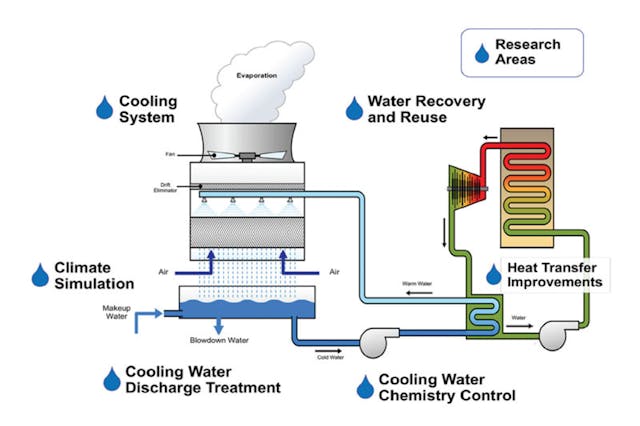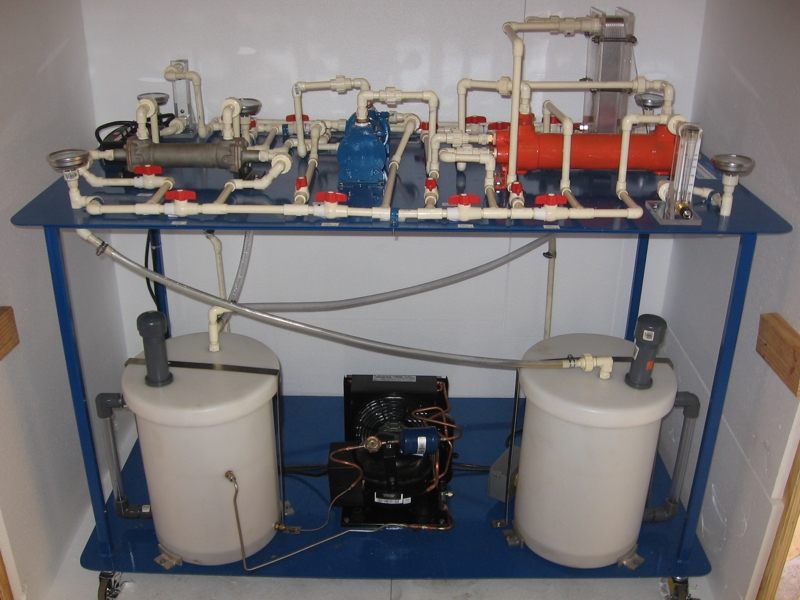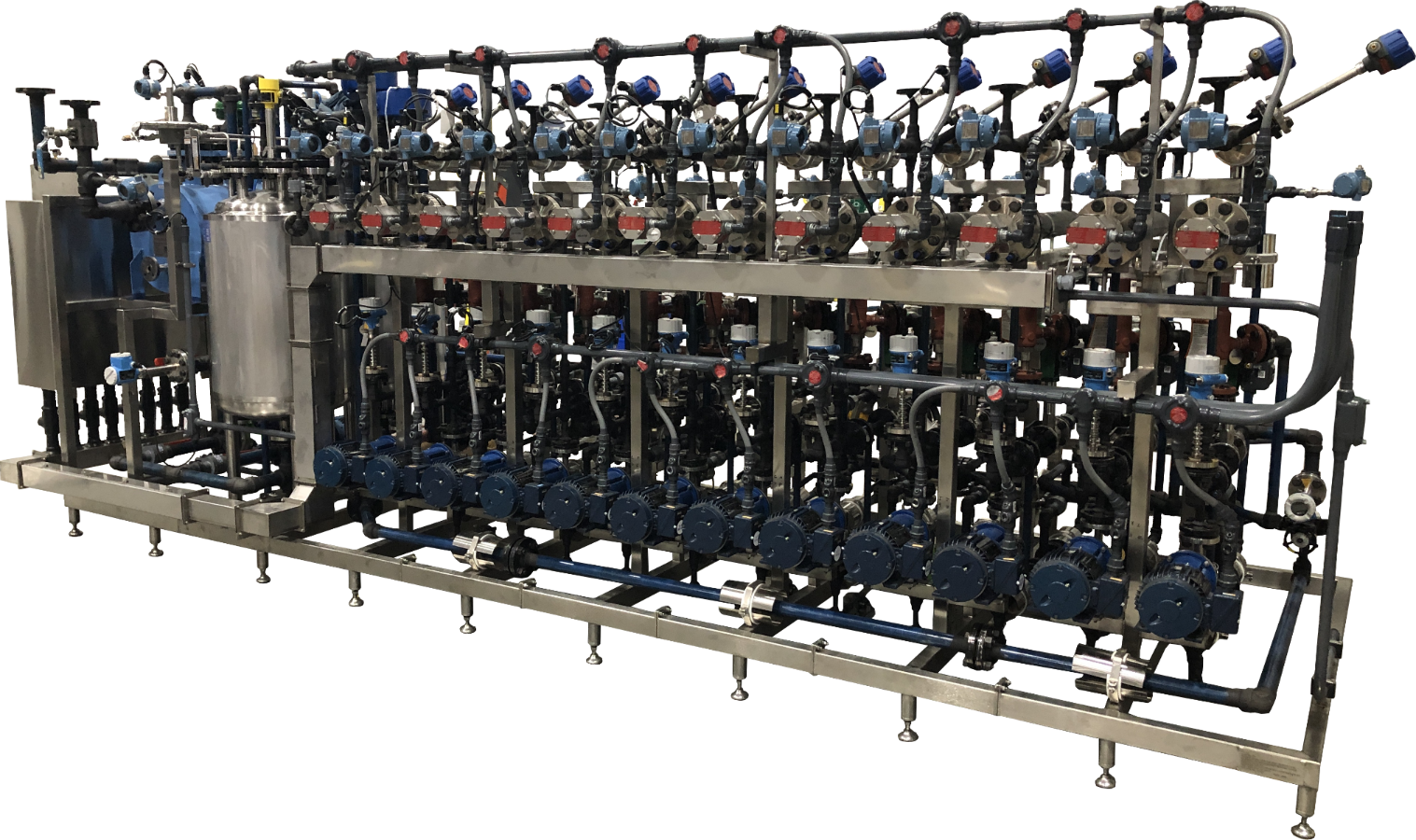Innovations in Heat Transfer Systems: What You Need to Know for Optimal Performance
Innovations in Heat transfer systems are changing efficiency throughout different industries. Advanced materials like graphene and nanofluids guarantee significant enhancements in thermal conductivity. At the same time, the integration of IoT and maker discovering offers chances for real-time surveillance and improved energy performance. Nevertheless, the landscape of thermal monitoring is rapidly evolving (DVS Heat Transfer Systems). Recognizing these developments is important for attaining perfect system performance and sustainability in the future. What details improvements are forming this transformation?
Arising Materials for Enhanced Heat Transfer

Advanced Heat Exchanger Styles
While typical Heat exchangers have offered their function in different applications, advanced designs are now emerging to fulfill the increasing demands for efficiency and performance. These ingenious styles, such as plate, shell-and-tube, and finned-tube Heat exchangers, incorporate enhanced surface area areas and boosted flow patterns to increase thermal transfer prices. Furthermore, portable layouts permit decreased room needs without endangering efficiency. Advanced products, such as composites and corrosion-resistant alloys, in addition enhance sturdiness and efficiency under severe conditions. Simulation modern technologies and computational liquid characteristics are increasingly used to improve these layouts, guaranteeing peak Heat transfer attributes. As industries look for to reduce energy consumption and take full advantage of outcome, the adoption of sophisticated Heat exchanger designs is crucial in attaining these objectives.
The Function of Nanotechnology in Heat Transfer
Nanotechnology plays a crucial function in improving thermal conductivity within Heat transfer systems. By manipulating materials at the nanoscale, scientists have accomplished substantial improvements in power performance. These improvements not only enhance performance however additionally add to more lasting power services.
Boosted Thermal Conductivity
Significant improvements in thermal conductivity have emerged through the application of nanotechnology, transforming Heat transfer systems throughout various industries. By including nanoparticles into Heat transfer fluids and materials, scientists have actually achieved impressive rises in thermal conductivity. These nanoparticles, such as carbon nanotubes, graphene, and steel oxides, improve the Heat transfer residential properties due to their high surface location and special thermal features. The resulting compounds exhibit enhanced efficiency in applications ranging from electronic devices cooling down systems to renewable power modern technologies. Furthermore, the ability to tailor the size, shape, and make-up of nanoparticles allows for optimized thermal management services. As a result, nanotechnology proceeds to play a critical duty in the advancement of more effective and reliable Heat transfer systems, leading the way for improved industrial applications.
Power Effectiveness Improvements

Assimilation of IoT in Heat Transfer Systems
The assimilation of IoT in Heat transfer systems introduces the implementation of clever sensors that improve operational performance. These sensors make it possible for real-time information monitoring, allowing for instant adjustments and optimizations. This technological development has the prospective to substantially enhance efficiency and power management in Heat transfer applications.
Smart Sensors Application
As Heat transfer systems develop, the integration of wise sensors via the Net of Points (IoT) has become a transformative approach. These sensing units enable real-time tracking of stress, temperature, and flow rates, enhancing system efficiency and integrity. By gathering and transmitting information, they help with proactive maintenance, decreasing the danger of system failures. In addition, smart sensors add to energy financial savings by refining functional criteria based on ecological conditions. Their capacity to evaluate trends and anomalies enables educated decision-making, making certain peak performance of Heat transfer systems. As industries progressively adopt this technology, the implementation of clever sensing units stands to change just how Heat transfer systems are taken care of, leading the means for greater sustainability and enhanced efficiency results.
Real-Time Data Surveillance
How can real-time data keeping an eye on enhance the effectiveness of Heat transfer systems? By integrating Internet his explanation of Points (IoT) technology, Heat transfer systems can utilize continuous information collection from smart sensors. This real-time monitoring permits for instant analysis of temperature level, circulation, and pressure prices, allowing drivers to identify inadequacies without delay. Subsequently, adjustments can be made to optimize efficiency, lower power usage, and extend devices lifespan. Furthermore, anticipating maintenance can be executed, lessening unforeseen downtime and costly repairs. The capability to visualize performance metrics via dashboards enhances decision-making, cultivating a proactive technique to system monitoring. Inevitably, real-time data keeping track of not only boosts functional efficiency yet additionally contributes to sustainability objectives within commercial processes.
Energy Effectiveness and Sustainability Trends
Energy efficiency and sustainability fads are improving the landscape of Heat transfer systems, driving advancement and conformity throughout different sectors. Organizations are progressively focusing on energy-efficient designs to lower operational expenses and decrease ecological impacts. The assimilation of renewable resource resources is coming to be much more prevalent, making it possible for Heat transfer systems to run sustainably while fulfilling governing requirements. Additionally, advancements in modern technologies and products advertise lower power intake and enhance general efficiency. Lifecycle assessments are likewise getting grip, allowing business to examine the environmental impact of Heat transfer systems from manufacturing to disposal. This focus on sustainability not just supports corporate duty however also placements organizations competitively in a market where consumers increasingly prefer green options. Energy efficiency and sustainability stay crucial considerations for future growths in Heat transfer technology.
Developments in Thermal Management Solutions
While the need for effective Heat transfer continues to rise, developments in thermal management services are emerging to resolve both efficiency and sustainability obstacles. Advanced products, such as phase adjustment products and nanofluids, are being created to boost Heat transfer efficiency - DVS Heat Transfer Systems. These materials boost thermal conductivity and permit far better temperature level law in various applications. Additionally, technologies like active thermal control systems are obtaining grip, allowing real-time modifications to manage Heat flow effectively. These systems add to power financial savings and lower the environmental influence of thermal processes. Moreover, the combination of IoT in thermal monitoring facilitates tracking and predictive upkeep, making sure optimized performance and longevity of Heat transfer systems. Generally, these advancements represent considerable strides toward more lasting thermal management techniques
Future Directions in Heat Transfer Modern Technology
Emerging improvements in thermal management solutions indicate an appealing future for Heat transfer modern technology. Researchers are progressively concentrating on establishing materials with exceptional thermal conductivity and enhanced power efficiency. Advancements such as nanofluids, which include suspended nanoparticles, provide considerable renovations in Heat transfer performance. Furthermore, the integration of wise products that adjust to differing temperature level problems is getting grip, enabling even more reliable and responsive systems. The rise of additive production strategies is additionally making it possible for the style of complicated Heat exchanger geometries that enhance fluid circulation. The implementation of equipment knowing algorithms is prepared for to transform the optimization of Heat transfer systems, promoting anticipating upkeep and performance enhancement. Collectively, these developments are poised to change the landscape of Heat transfer modern technologies in different markets.

Regularly Asked Concerns

Just how Do I Select the Right Heat Transfer System for My Application?
Choosing the best Heat transfer system includes assessing application demands, consisting of temperature level ranges, liquid properties, and performance demands. Assessing system kinds, upkeep considerations, and cost-effectiveness likewise plays a crucial function in making an informed decision.
What Are the Maintenance Requirements for Advanced Heat Exchangers?
Maintenance demands for sophisticated Heat exchangers generally consist of routine inspections, keeping track of for leakages, cleansing of surface areas, and guaranteeing optimal circulation prices. Following manufacturer standards guarantees efficient procedure and lengthens the tools's lifespan.
How Do Ecological Aspects Impact Heat Transfer Efficiency?
Environmental elements considerably affect Heat transfer efficiency. Variants in temperature level, moisture, and air flow influence thermal conductivity and convective Heat transfer, inevitably impacting system performance and demanding consideration during the layout and operation of Heat transfer systems.
What Safety Specifications Apply to Heat Transfer Systems?
Safety criteria for Heat transfer systems commonly include standards from organizations such as ASME and ASTM. DVS Heat the original source Transfer Systems. These requirements address products, design, and functional practices to guarantee dependability, effectiveness, and defense against dangers in numerous applications
Just How Can I Repair Common Heat Transfer System Issues?
Fixing typical Heat transfer system concerns entails checking for leaks, making certain correct liquid flow, inspecting insulation honesty, and confirming temperature level differentials. Identifying these factors can assist maintain system efficiency and prevent further problems.
Nanotechnology plays an essential role in enhancing thermal conductivity within Heat transfer systems. Considerable innovations in thermal conductivity have actually arised with the application of nanotechnology, revolutionizing Heat transfer systems across different markets. Innovations in thermal conductivity via nanotechnology have led the means for remarkable improvements in energy efficiency within Going Here Heat transfer systems. Energy performance and sustainability fads are improving the landscape of Heat transfer systems, driving advancement and compliance throughout various industries. The assimilation of IoT in thermal administration assists in tracking and anticipating maintenance, guaranteeing enhanced performance and long life of Heat transfer systems.